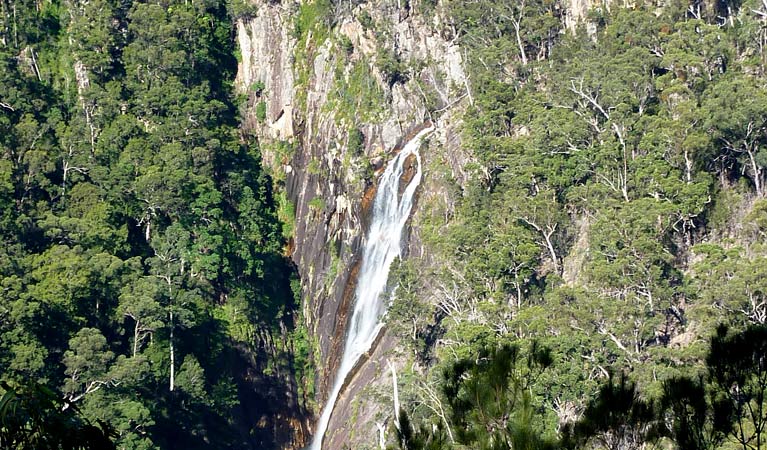Carrai National Park
Overview
Carrai National Park is located on a granite plateau off the North Coast of New South Wales, offering bushwalking, mountain biking, 4WD touring and camping for self-reliant campers.
Read more about Carrai National Park
Inland from Kempsey, Carrai National Park protects vast tracts of eucalypt groves and subtropical rainforest on Carrai plateau, a huge granite area with steep escarpments that drop dramatically to Kunderang Brook and Macleay River.
For those with a sense of adventure, a 4WD, and some good camping gear, this part of the New England Tablelands offers an excellent opportunity to get back to the bush; very little infrastructure exists in the park’s 11,397ha. Some basic huts offer shelter at Daisy Plains, and rough tracks traverse the thick forest. One of them is the only access to Marys View lookout in neighbouring Oxley Wild Rivers National Park, and all are great for mountain bikers.
Experienced bushwalkers can trek out through the forest and enjoy jaw-dropping views across the Macleay River valley. Keep your eyes peeled too, because Carrai is home to more than 125 different species of animals, from the endangered Hastings Rivers mouse to native carnivores such as quolls and dingoes. For those with good eyes and a pair of binoculars, several vulnerable species of owls and bats also live in the park.
Local alerts
For the latest updates on fires, closures and other alerts in this area, see https://www.nationalparks.nsw.gov.au/visit-a-park/parks/carrai-national-park/local-alerts
Contact
- in the North Coast and Country NSW regions
Carrai National Park is always open but may have to close at times due to poor weather or fire danger.
-
-
Walcha office
02 6777 4700
Contact hours: Monday to Friday, 8.30am to 4.30pm. - 188W North Street, Walcha NSW 2354
-
Email: npws.nea@environment.nsw.gov.au
-
Walcha office
-
-
Sea Acres Rainforest Centre
02 6582 3355
Contact hours: 9am to 4.30pm daily. Closed Christmas Day. - 159 Pacific Drive, Port Macquarie NSW 2444
-
Email: seaacres@environment.nsw.gov.au
-
Sea Acres Rainforest Centre
Visitor info
All the practical information you need to know about Carrai National Park.
Map
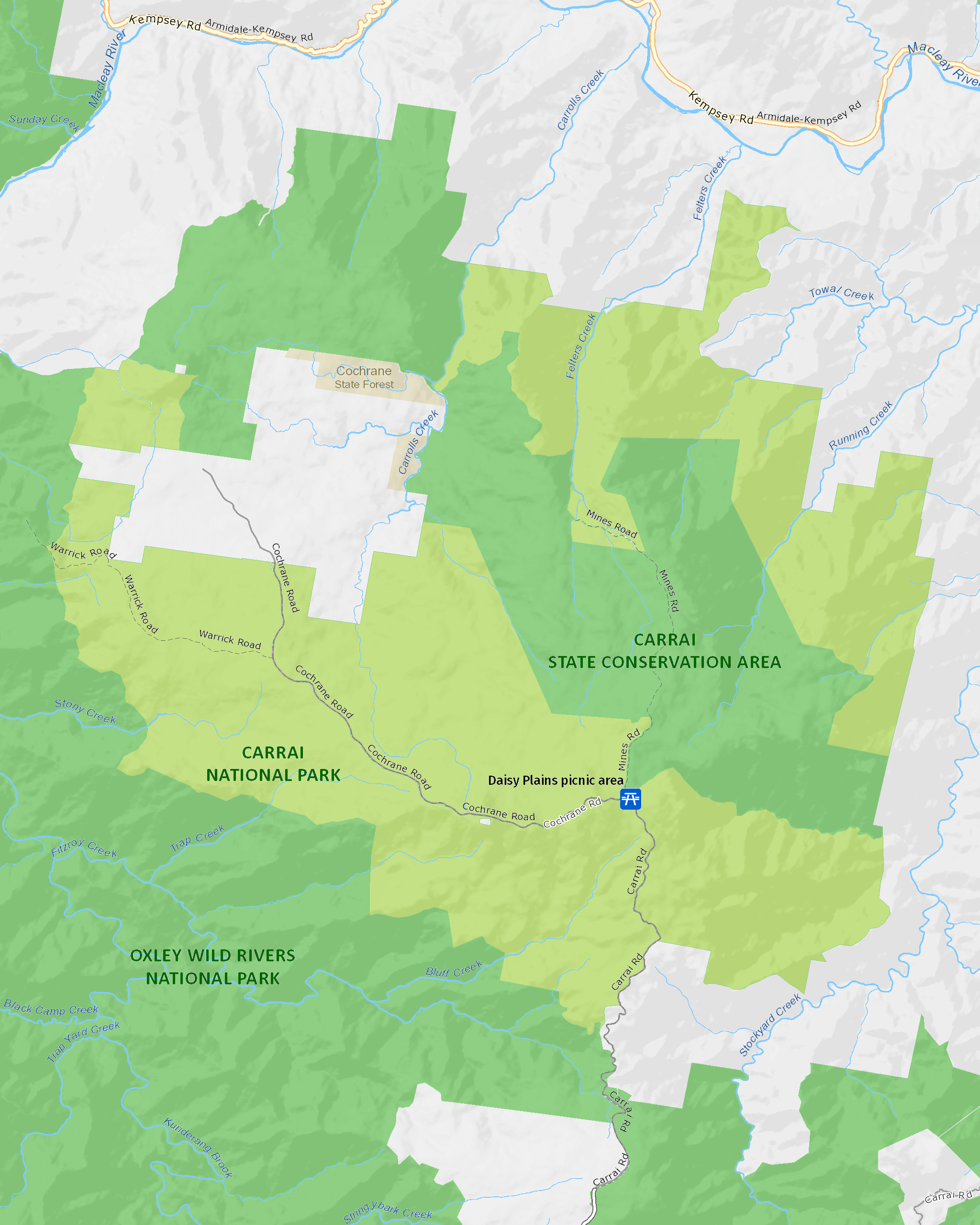
Map legend

Getting there and parking
Get driving directions
From Armidale, head to Walcha and take the Oxley Highway to Kangaroo Flat Road. Follow the signs to Werrikimbe National Park, then take the Racecourse Trail through to Coachwood Road to Kookaburra, then Carrai Road.
By bike
Check out the Bicycle information for NSW website for more information.
By public transport
For information about public transport options, visit the NSW country transport info website.
Best times to visit
There are lots of great things waiting for you in Carrai National Park. Here are some of the highlights.
Autumn
During April, the days are still warm and there should be little rain which is perfect for 4WDing.
Spring
The eucalypts and other forest trees flower in spring, tempting foraging birds.
Weather, temperature and rainfall
Summer temperature
Average
16°C and 29°C
Highest recorded
35°C
Winter temperature
Average
6°C and 20°C
Lowest recorded
–5.1°C
Rainfall
Wettest month
January
Driest month
July
The area’s highest recorded rainfall in one day
234.6mm
Maps and downloads
Prohibited
Pets
Pets and domestic animals (other than certified assistance animals) are not permitted. Find out which regional parks allow dog walking and see the pets in parks policy for more information.
Smoking
NSW national parks are no smoking areas.
Nearby towns
Kempsey (100 km)
Kempsey is a historic river town close to national parks and majestic beaches. Kempsey is a convenient place for an overnight stop for anyone driving between Sydney and the North Coast.
Armidale (200 km)
During autumn the parks and gardens around Armidale show their beautiful colours. Enjoy a drive along the Waterfall Way, stopping at waterfalls and craggy gorges in the rugged countryside.
Learn more
Carrai National Park is a special place. Here are just some of the reasons why:
Traditional lands of Thunggutti People
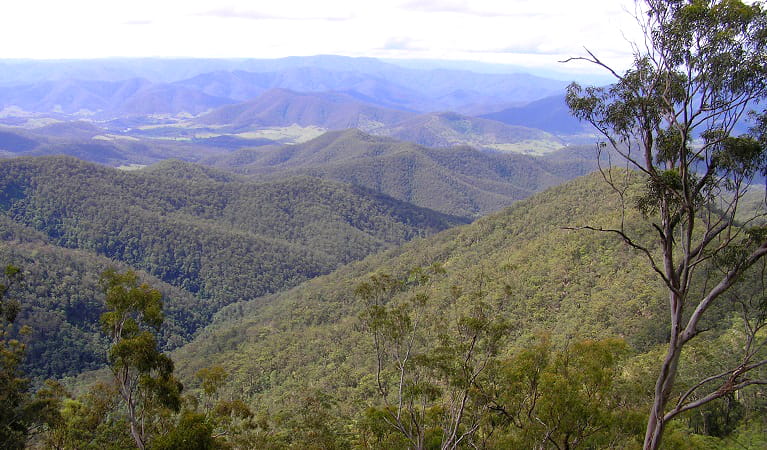
The Carrai plateau is a special place for the Thunggutti People, with many ceremonial sites that have their origins in the dreamtime. It's believed that Aboriginal people moved from the coastal hinterlands to the New England Tablelands, including parts of what is now Carrai National Park, during the summer months. In the early to mid-1800s, the rugged country at the head of Macleay River also provided refuge for many Aboriginal people.
Protecting Carrai's wilderness
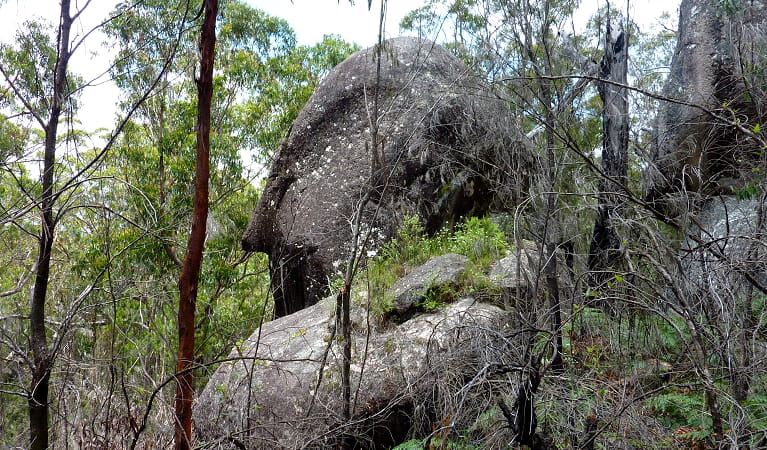
An area of 3,530ha within Carrai National Park has been declared wilderness under the Wilderness Act 1987. Although much of Carrai's forested area has been affected in some way by human habitation - logging and grazing, for example - it's now protected, allowing it to recover. There are three old-growth forest ecosystems in the park, including groves of white mahogany, dry redgum, bloodwood, native apple, and tallowwood. Look for the endangered Guthrie's grevillea, with its green and maroon flowers, as well as epiphytic orchids attached to the trunks of trees.
- Daisy Plains picnic area Visit Daisy Plains picnic area when you travel through Carrai National Park by 4WD. It’s the perfect spot for peaceful lunch when exploring this park’s beautiful forests and steep escarpments.
A safe haven for native animals
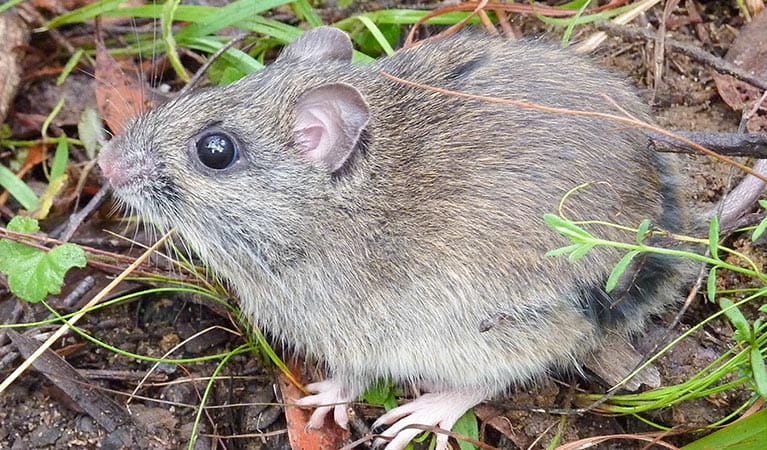
Maintaining vast tracts of remote forest, like those at Carrai, is essential for protecting biodiversity and keeping the populations of native animals at high levels. Carrai is known to harbour endangered species like the Hastings River mouse, a rodent that likes damp habitats, and the giant barred frog, which grows to a size of about 12cm and lays its eggs on banks overhanging rivers. Listen for its deep grunt when you stop by a creek.
- Daisy Plains picnic area Visit Daisy Plains picnic area when you travel through Carrai National Park by 4WD. It’s the perfect spot for peaceful lunch when exploring this park’s beautiful forests and steep escarpments.
From the 1800s
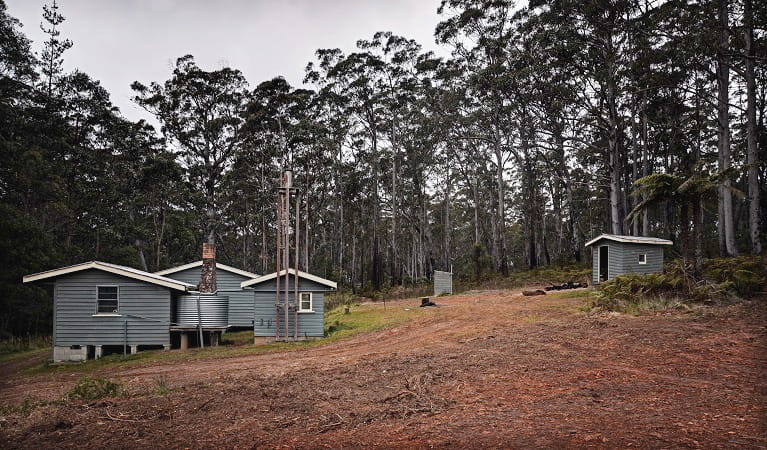
In many ways, Carrai’s remote location has protected it from extensive grazing and mining. In 1818, John Oxley was the first European to visit the New England Tablelands, closely followed by cedar loggers. Graziers eventually moved their stock up river valleys onto the tablelands. Both tin and gold were mined in the area until the 1960s, and forestry ceased in the early 90s.
- Carrai and Coachwood trails Carrai and Coachwood trails combines 2 remote 4WD adventures in Carrai National Park and Oxley Wild Rivers National Park, between Kempsey and Armidale.
Plants and animals protected in this park
Animals
-
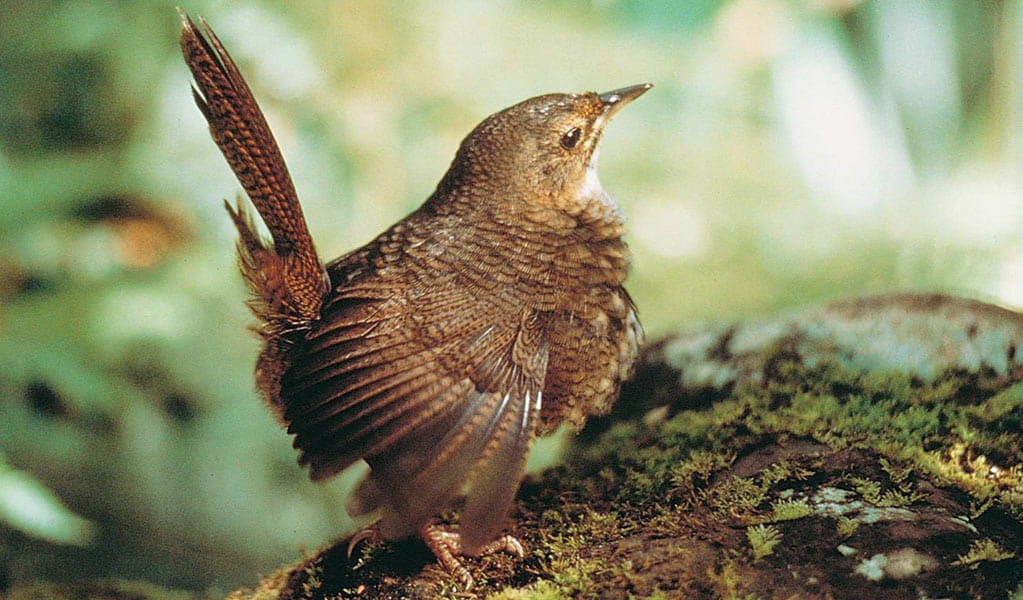
Rufous scrub-bird (Atrichornis rufescens)
The vulnerable rufous scrub-bird is a small, ground-foraging bird that lives only in isolated rainforest areas of south-eastern Australia.
-

Swamp wallaby (Wallabia bicolor)
The swamp wallaby, also known as the black wallaby or black pademelon, lives in the dense understorey of rainforests, woodlands and dry sclerophyll forest along eastern Australia. This unique Australian macropod has a dark black-grey coat with a distinctive light-coloured cheek stripe.
-

Southern boobook (Ninox novaeseelandiae)
The southern boobook, also known as the mopoke, is the smallest and most common native owl in Australia. With a musical 'boo-book' call that echoes through forests and woodlands, the southern boobook is a great one to look out for while bird watching.
-
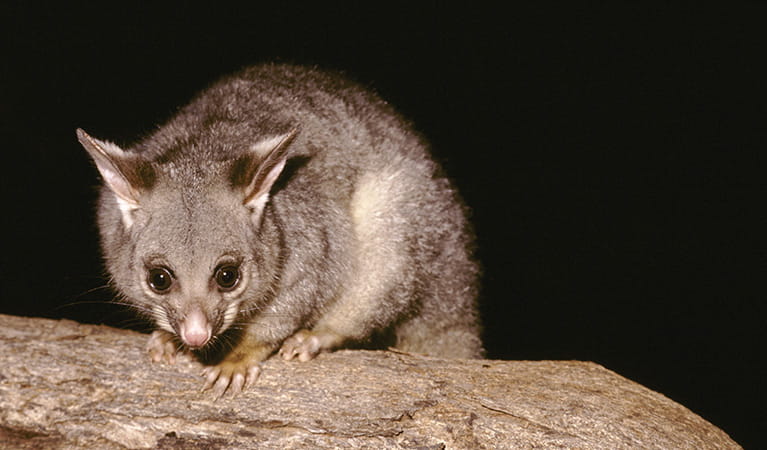
Common brushtail possum (Trichosurus vulpecula)
One of the most widespread of Australian tree-dwelling marsupials, the common brushtail possum is found across most of NSW in woodlands, rainforests and urban areas. With strong claws, a prehensile tail and opposable digits, these native Australian animals are well-adapted for life amongst the trees.
Education resources (1)
What we're doing
Carrai National Park has management strategies in place to protect and conserve the values of this park. Visit the OEH website for detailed park and fire management documents.

